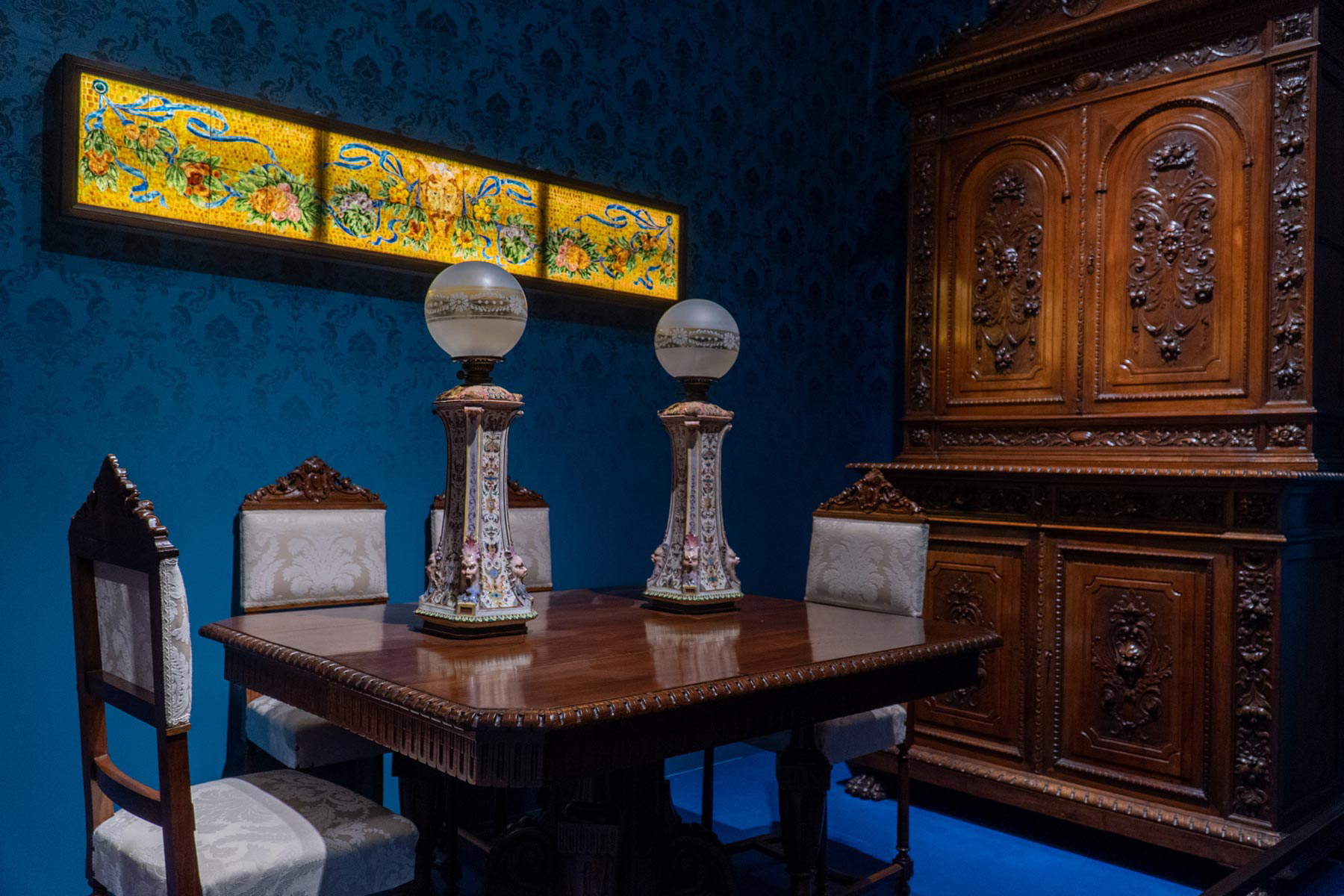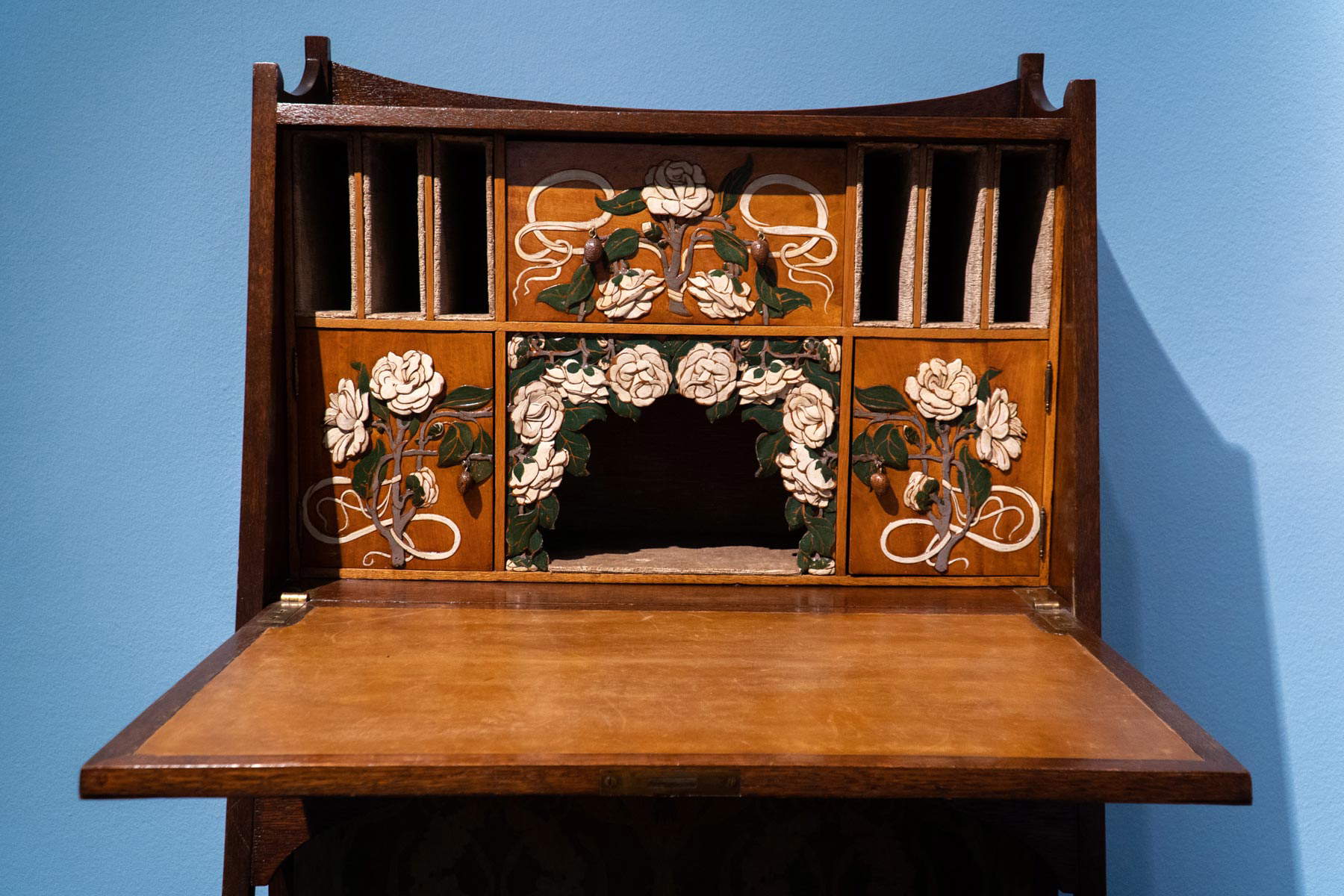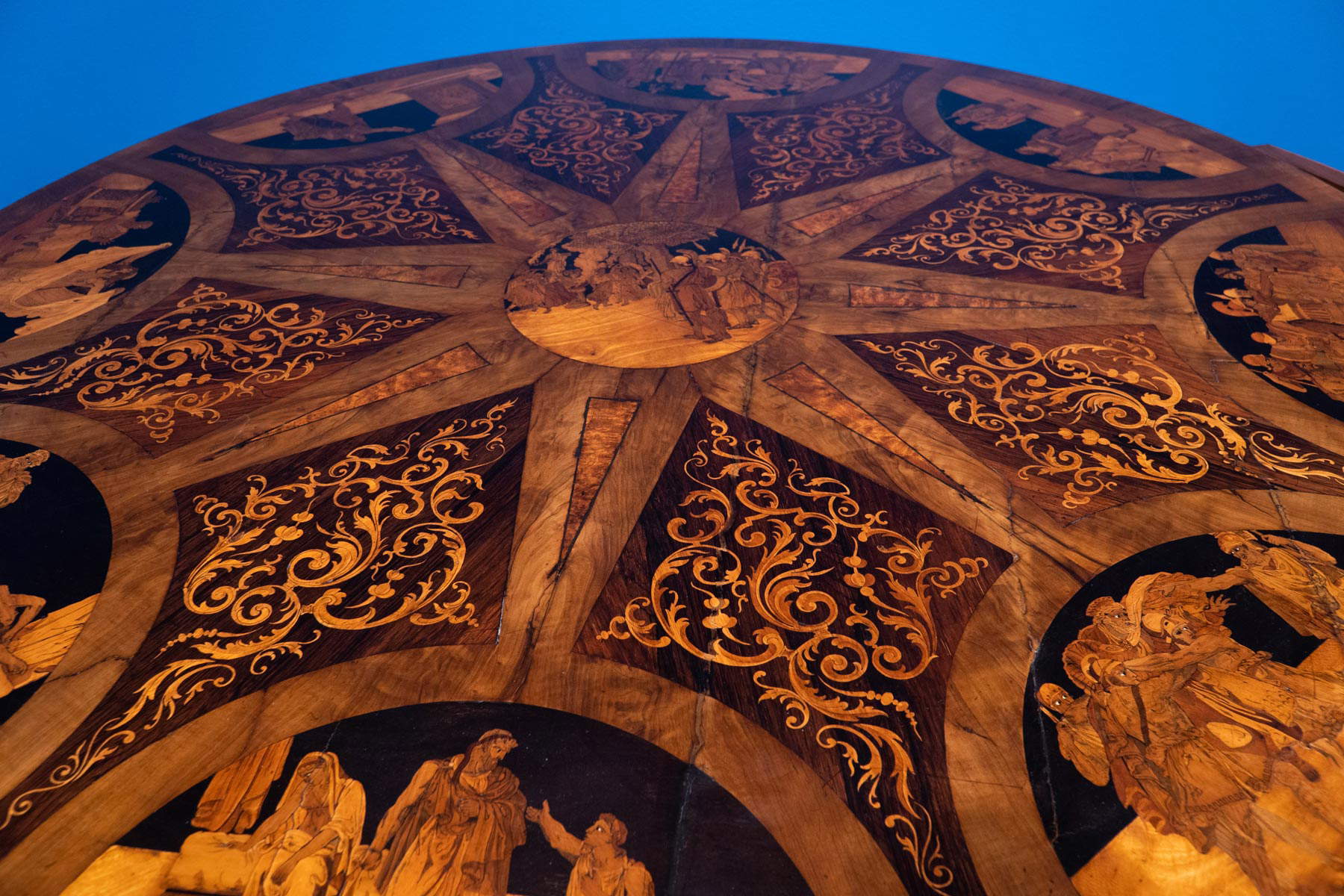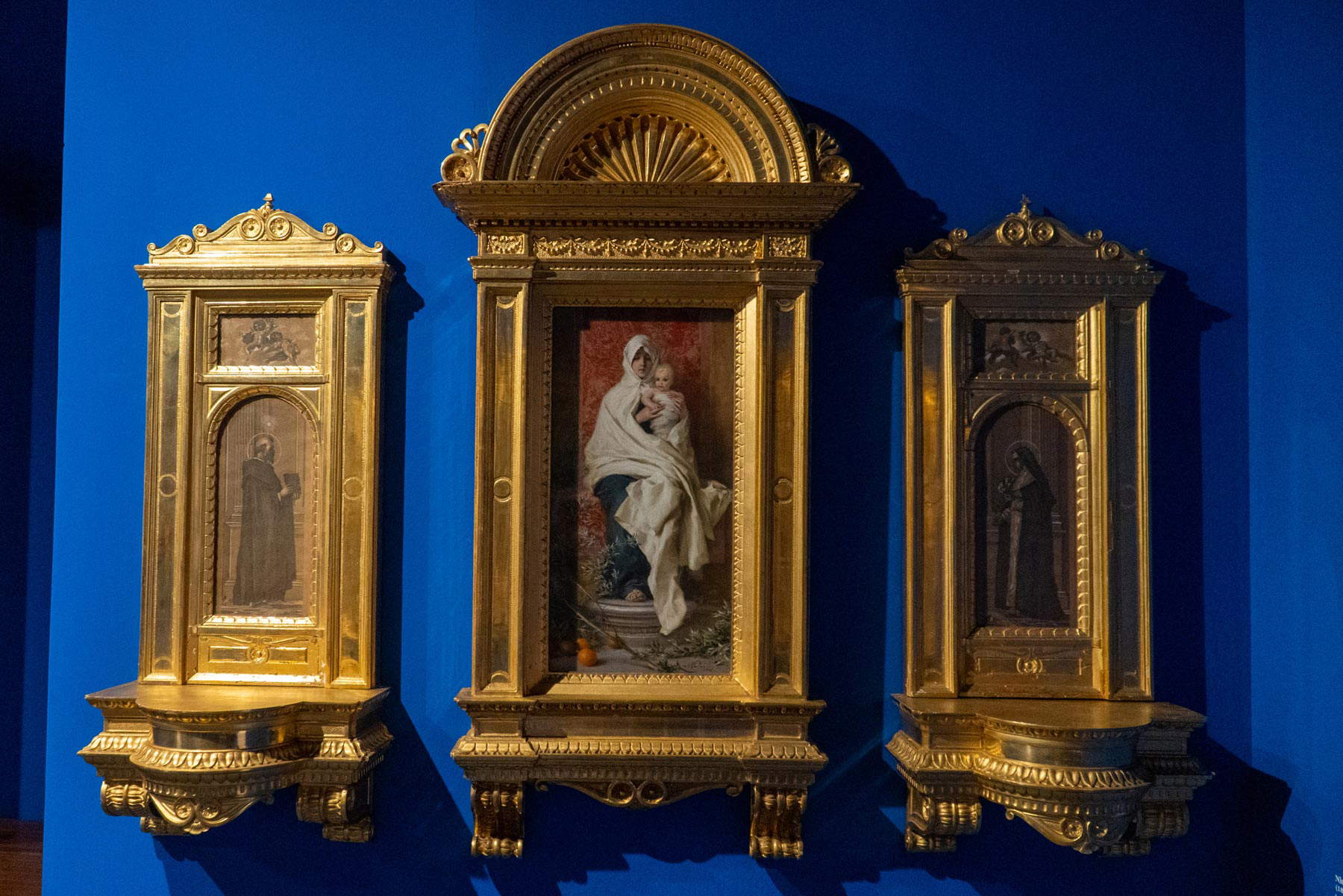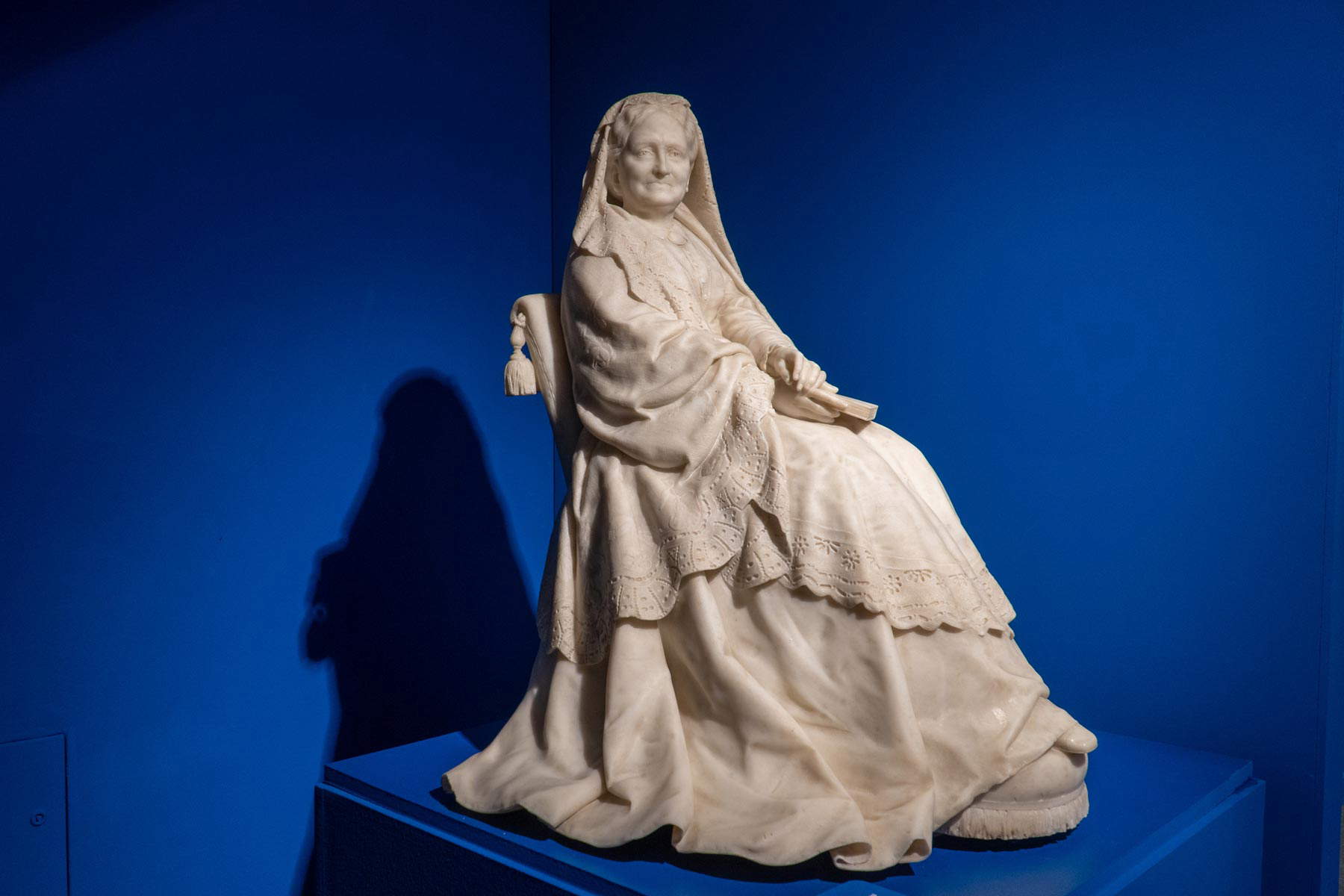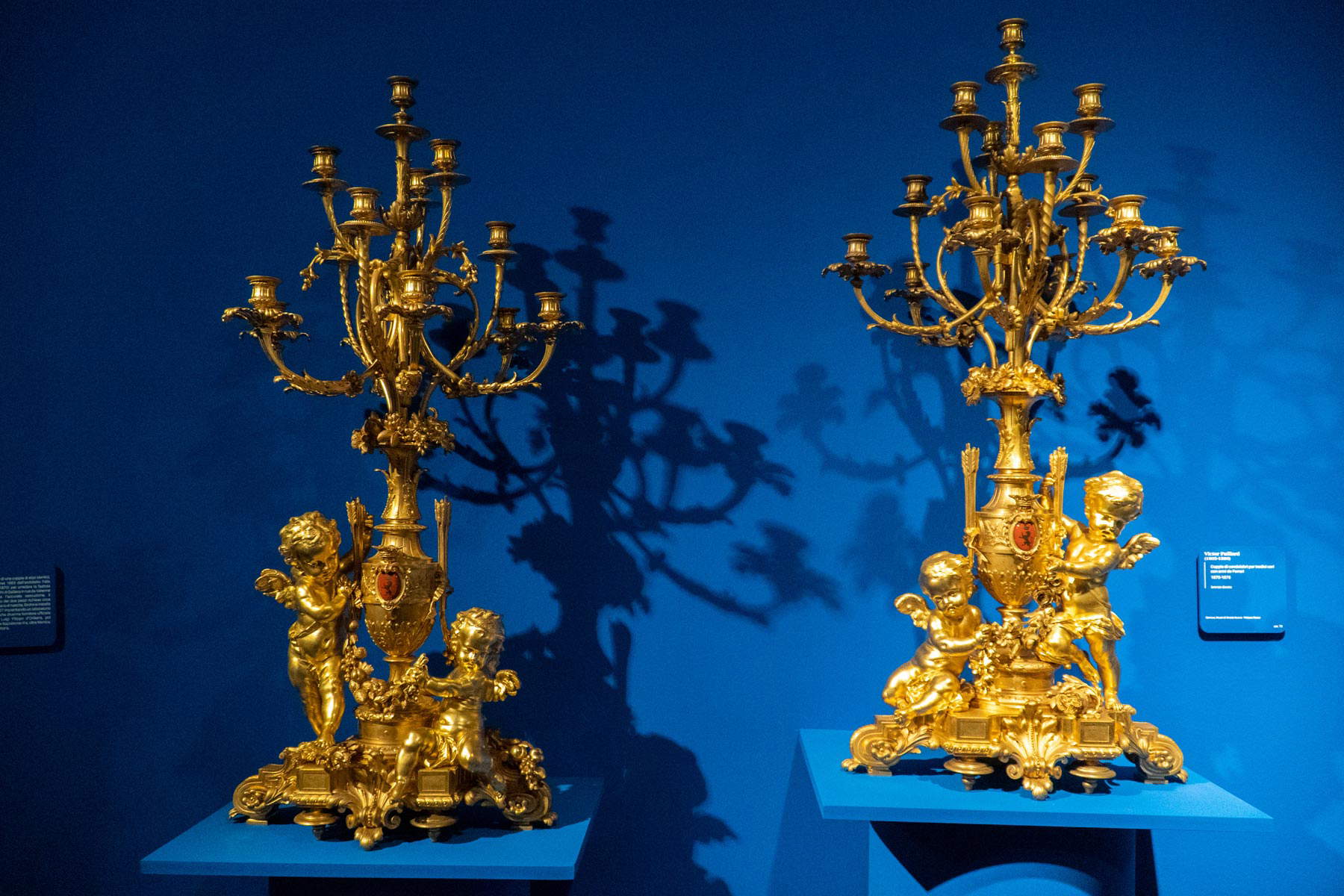by Redazione , published on 05/08/2020
Categories:
Exhibitions
/ Disclaimer
Through Nov. 1, in Genoa, in the Falcone Theater of the Royal Palace, the exhibition "Mahogany Ebony Gold!" takes the public on a journey through the splendors of 19th-century Genoa interiors, from Henry Thomas Peters' cabinetmaking to the Art Nouveau style.
Until Nov. 1, the Teatro del Falcone at the Palazzo Reale in Genoa is hosting the exhibition Mahogany Ebony Gold! Artistic Interiors in Genoa in the Nineteenth Century, from Peters to Art Nouveau, which was originally scheduled to close on July 5 but was extended due to the health emergency. The exhibition, curated by Luca Leoncini, Caterina Olcese Spingardi and Sergio Rebora, aims to combine art and craftsmanship by exploring the production of furniture and decorative arts in Genoa in the nineteenth century, starting with the furniture designed and made by the English furniture maker Henry Thomas Peters (Windsor, 1792 - Genoa, 1852), who moved to Genoa and lived here the last phase of his career, for a good thirty-five years. The figure of Peters was very important forLigurian cabinetmaking because he ferried the sector from an elegant artisan practice to a modern level of industrial and serial production that was capable of responding as much to the needs of the most cultured and sophisticated clientele as to the more measured desires of the bourgeoisie of business and trade.
More than two hundred pieces are on display in the itinerary, divided into sections based on the types of furnishings: there is furniture, paintings, drawings and sketches, porcelain, majolica, sculptures, plaster casts, and photographs, to evoke the cultural choices typical of the new upper middle class of business and trade, active in Genoa in the early 19th century. There are several objectives of the exhibition: the first is to recount the fundamental role played by Peters in nineteenth-century Genoa (the secret of his success is to be found, on the one hand, in a stylistic formula congenial to the taste expressed by the Ligurian society of the time and, on the other, in his ability to meet the growing demands of an increasingly broad clientele through the creation and launching on the market of a rich range of types of decorative objects). His interpretation of the role of the entrepreneur, with the introduction of “protodesign” methods, according to Antonella Rathschüler’s felicitous definition, made him a forerunner of the industrial revolution in the lagging Italy of the first half of the 19th century. There will also be space to recount Peters’ workshop, where such carvers as Pietro Lagomarsino, Giacinto Grosso, Pietro Lavarello, Avverardo Fornaroli worked, and among those of the inlayers Giovanni Battista Gaolio, a true virtuoso of the branch: all trained at theLigustica Academy of Fine Arts and are distinguished and united by a koinè extended also to marble sculpture and codified in the ways of Bartolomeo Fabbri, proprietor of the School of Ornamentation.
Again, the exhibition intends to revive, through a special section, the atmosphere of the Genoa of the Risorgimento, with inlaid furniture, sculptures and paintings illustrating episodes and famous characters from the epic of the Risorgimento (Garibaldi, Mazzini, but also Bianca Rebizzo and Carolina Celesia). And then again, there is an in-depth look at thebanistery dedicated to buildings of worship, addressed by recalling in the exhibition the magnificent choir of the Cathedral of San Lorenzo, designed by Santo Varni, one of the most prolific and sought-after Genoese sculptors of the 19th century, and executed under his direction by a composite team of talented workers. We then come to the Unification of Italy, and the relationship with the city’s institutions is reconstructed through some examples of the original furnishings of Palazzo Tursi, the renovated seat of the City Hall, now no longer in place and traced on the occasion of the exhibition, and of theHospital Sant’Andrea Apostolo, founded by Maria Brignole Sale duchess of Galliera, and the Carlo Felice Theater.
Then there is a section devoted to private patronage: some furnishings, extrapolated from the more complex original context (the sumptuous mansions of 19th-century Genoa), illustrate the swirling evolution of taste, updated on European-style models, from Biedermeier to the most extreme eclecticism. A focus is also devoted to art ceramics, an indispensable decorative complement to late 19th-century interiors: on display is a sampling of the multifaceted production of the manufactory founded in 1883 in Genoa by entrepreneur Cesare Moreno and sculptor Michele Sansebastiano, with the contribution of multiple artists including painter Giuseppe Pennasilico. And again, two sections that analyze the history of furniture in a broader perspective are devoted to the production of light chairs in Chiavari, starting with those by Giuseppe Gaetano Descalzi known as Campanino (also sought after in courts throughout Europe), and to the historiated inlays executed by important artisans in Savona (the Garassino brothers, Ignazio Scotto, Giuseppe Bertolotto) destined for sacred furnishings but also for tables and cabinets to be ostentatiously displayed in the new bourgeois salons. Finally, the last section of the exhibition is devoted to the processes that, by the end of the century, transformed Genoa into a modern city open to international comparison: thus we come to the birth and spread of the Art Nouveau style in the city, in all its different meanings.
The exhibition, organized in collaboration with the Soprintendenza Archeologia, Belle Arti e Paesaggio for the metropolitan city of Genoa and the provinces of Imperia, La Spezia and Savona and the Municipality of Genoa, is supported by Compagnia di San Paolo, and is accompanied by a scholarly catalog published by Scalpendi Editore structured with essays and entries signed by several leading scholars.
It will be open from Thursday to Sunday (therefore closed on Mondays, Tuesdays and Wednesdays) from 10 a.m. to 7 p.m. Entrances are limited (no more than 15 people per hour will be allowed in the exhibition), and compulsory reservations are in force through online ticket purchase on the appropriate website (at this link, on the other hand, you can purchase the combined exhibition+museum ticket). Thus, ticket purchase will take place online with printing by the user or viewing via smartphone, except then passing by the ticket offices to verify the ticket upon arrival. It will also be possible to purchase a ticket in the museum, but provided that the maximum hourly capacity numbers have not already been reached. Prices have been lowered from the regular rates, to maximize incentives for returning visitors: 6 euros for the exhibition ticket (5 the reduced 18-25 years old, TCI members, Lions Club and Palazzo Spinola National Galleries ticket holders), 8 euros for the combined exhibition + Palazzo Reale Museum. In addition, during the exhibition period, it will be possible to visit the National Galleries of Palazzo Spinola at the special price of 2 euros by showing the exhibition entrance ticket.
Below are some images of the exhibition.
 |
| A room of the exhibition |
 |
| A room of the exhibition |
 |
| Alberto Issel, Folding Desk (Genoa, Artes di Sassi Emanuele) |
 |
| Clemente Boeri, Table with drawers and secrets clogged with episodes from ancient Greek history (Tortona, Gogna Bros Collection) |
 |
| Francesco Barzaghi, Frine denudata al cospetto dei giudici (Genoa, Castello D’Albertis - Museo delle Culture del Mondo) |
 |
| Giovanni Battista Gaolio, Savonarola-type inlaid chair (wood, ivory and silver; Private collection) |
 |
| Giovanni Battista Gaolio, Inlaid coffee table (wood, ivory and silver; Private collection) |
 |
| Henry Thomas Peters, Secrétaire (1841-42; Genoa, Palazzo Reale, Appartamento Principi Ereditari) |
 |
| Nicolò Barabino, Triptych of the Madonna of Oranges (private collection) |
 |
| Henry Thomas Peters, Sofa Sala Udienze (Genoa, Royal Palace) |
 |
| Santo Varni, Bianca De Simoni Rebizzo (Genoa, Istituo Mazziniano-Museo del Risorgimento) |
 |
| Victor Paillard, Pair of candelabra for thirteen candlesticks with de Ferrari arms (Genoa, Musei di Strada Nuova, Palazzo Rosso) |
 |
| The splendid interiors of nineteenth-century Genoa are on display at the Royal Palace |
Warning: the translation into English of the original Italian article was created using automatic tools.
We undertake to review all articles, but we do not guarantee the total absence of inaccuracies in the translation due to the program. You can
find the original by clicking on the ITA button. If you find any mistake,please contact us.


